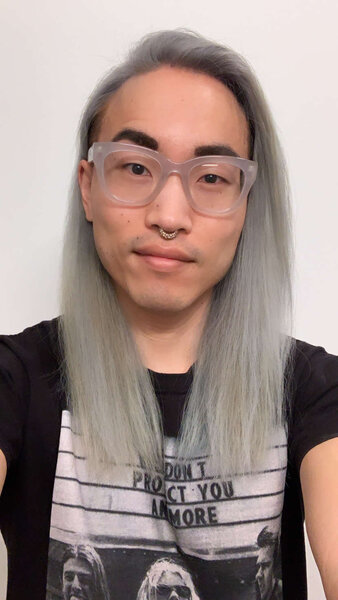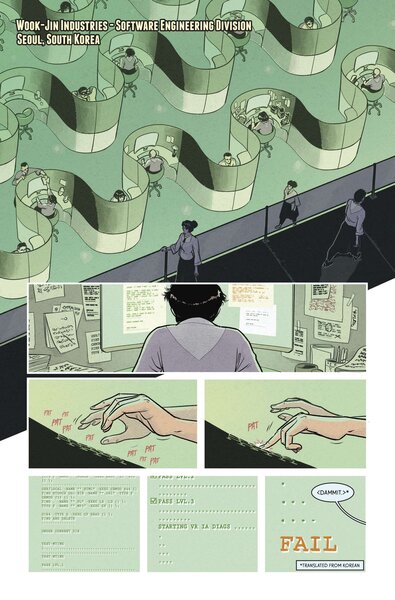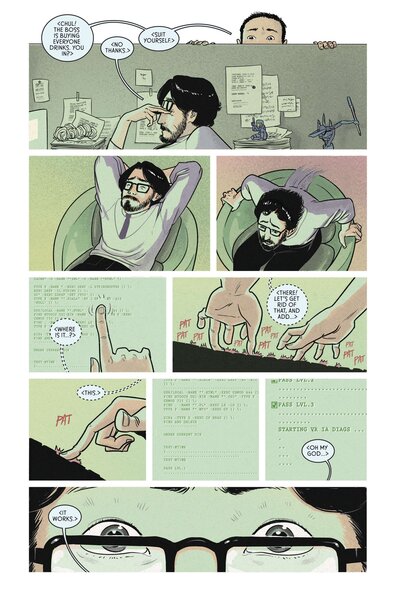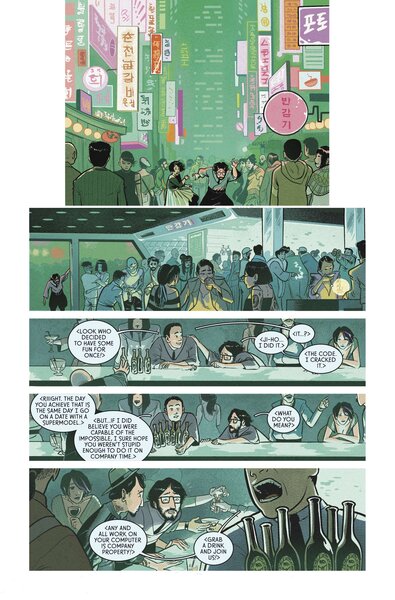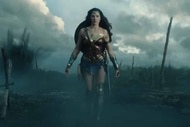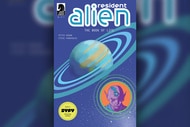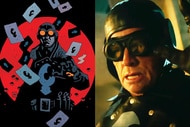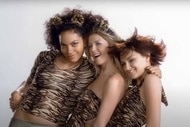Create a free profile to get unlimited access to exclusive videos, sweepstakes, and more!
Image Comics' 'Made in Korea' defiantly breaks the artificial intelligence mold
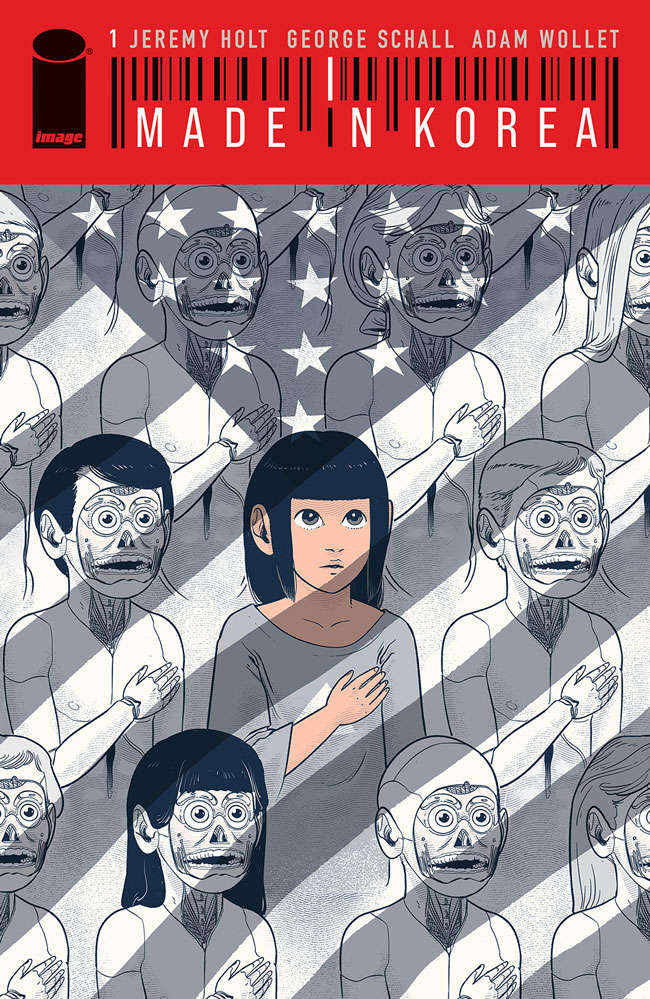
On May 26, Image Comics is releasing a new book about artificial intelligence. Rather than asking big existential questions — Why are we here? What makes something “alive”? Will robots one day kill us all? — Made in Korea is an intimate adoption story about a robot that is sent across seas to live with a caring couple in the United States in the not-so-distant future. The couple purchased the artificial surrogate child in an attempt to grow their family. However, upon the robot Jesse’s arrival, she discovers her new parents aren’t the only ones who are in need of her talents.
Put simply, Made in Korea is like if British TV series Humans were reimagined through the lens of legendary manga artist Osamu Tezuka and fixated on the question of nature vs. nurture. Written by Jeremy Holt (Before Houdini, Virtually Yours) with wondrous and whimsical art by George Schall (Planet of the Apes: The Time of Man), the series is inspired by the works of Steven Spielberg, Alex Garland, and Neill Blomkamp. Most importantly, though, Holt realized that if they tapped their own life experience, they could add a fresh story to the AI genre without needing to reinvent the wheel.
SYFY WIRE had the opportunity to preview the first four issues of the six-issue miniseries and each chapter is beautifully rendered and takes unexpected turns. We spoke with Holt about Made in Korea, the duality of being Asian and American, finding one’s identity, and being brave by getting past the established formula to form a connection with others.
What led you to the concept of Made in Korea?
I started to think of my life experience as an adoptee, I realized that all AI stories are rooted in adoption stories. They are foreign to their maker, they are foreign to the family that ends up adopting them, and at its core, it’s an adoption story. I wanted to explore things that were important to me and my feelings about these topics.
Co-creator George Schall’s art has texture, curves, and a bit of cartoony expressions, which are qualities you don’t always see in a science fiction tale about artificial life.
With an AI book, a lot of the time, people want to go for art that’s highly rendered, sharp edges, and very detailed. What spoke to me about George’s work is his aesthetic, he has a graphic design background so those sharp, sleek edges come through the covers and interior covers. But his sequential art has a softness that was pleasing to me. His style has evolved over the last three years in working with him on this. Even the ways he’s drawn and colored specific characters has evolved. It’s just been nice that we gave ourselves time for him to develop his signature style which I think he is confident and comfortable with at this point.
As a young immigrant, you do wonder what identity you want to adopt while living in a new world, learning a new language and cultures — also what you want to keep from your old life?
Identity is something I explore through all of my work, not just simply as an adoptee but as an identical triplet. So I have two brothers and we were adopted together. Sharing an identity with two people has been a challenge for me. Being raised by white people and in a predominantly white household, it’s been interesting leaning into “Asian-ness,” because it was fairly non-existent growing up. I grew up overseas in these international communities, in multiple countries and the idea of foreignness really wasn’t prevalent to me until I moved to the U.S.
So I wanted to explore the duality of being Asian American but also, what does it mean to be a parent? What does it take to be a caretaker? Just because you create a kid doesn’t mean you’re suitable to be that kid’s parent. The struggles some adoptee parents deal with is that "this is not my biological child," then it becomes a nature versus nurture debate. I don’t think you have to give birth to call yourself a parent, you just have to be there and support them when they need it most. That was definitely one of the main topics, and I specifically wanted to set it in two different locations to give the reader the sense of these very, very different worlds that the protagonist has to navigate through.
Everybody sees Jesse differently, whether it’s her adoptive parents, her maker, or her classmates. If you don’t have an identity, as a kid wanting to fit in, you can be easily corruptible or used.
And what does it mean to live that duality of being Asian and American? My brother experienced an unfortunate time in his freshman year in college when he wanted to make Asian friends. I wanted to do this as well for myself in college, because I didn’t really have a predominant Asian group of friends. The friends that he made in Virginia told him that “Asian American” doesn’t exist. You’re either Asian or American, you have to pick. I think about that a lot. How many Asian Americans feel that way, or feel forced to pick because we’re constantly viewed as others?
For me as an adoptee, I also feel [like an] other within the Asian community because I didn’t have experiences like bringing "strange" lunches to school. That doesn’t protect me from the racism that I’ve experienced my entire life. Working through that, navigating it, and processing it has been interesting. I thought it was ripe content to pluck from and tell a story. What is more “other” than being the first artificial intelligence child? You’re the first of your kind.
Did you (or your siblings) ever wonder about what was the experience missed by not growing up with Asian parents?
That’s a good question. For me, the slight disservice that I and other Korean adoptees that I’ve spoken to received — I feel as if my parents had this lofty ideal of not wanting to see color and treating us like basically how they saw themselves. As lofty as it was, I do think it was a disservice because it didn’t prepare me for the harsh reality that the world doesn’t see me the way my parents want to see me. I have for most of my life, viewed myself as white.
I often reference two people, Michael Jackson and Rachel Dolezal who was famously a member of the NAACP but isn’t Black. To me, they exist on the same spectrum that I’m on, which is how I see myself in my mind’s eye, doesn’t necessarily link up with what I see in the mirror. The difference is that they’re on one end of the spectrum where they’re changing their outward appearance. I didn’t do that, but I do feel the displacement of it.
So I wished that my parents had been a bit more mindful that they were raising Asian children and needed to be aware of the differences that exist in the world, because life isn’t as simple as "let’s all just get along."
Growing up in a traditionally Asian family, life can be very planned out. Different people want Jesse to be so many different things. Did that go through your mind as well writing Jesse’s responses and reactions?
I think so and I found it a fun challenge to piece together how to juggle her whole character arc, the way people around her see her, how she internalizes it, how she responds, and reminding myself that her development is at an accelerated rate. This story takes place over a couple of months and in that time span, she goes from infancy to adulthood. I had to keep mindful of that regarding her decision-making, as the story progressed because she had to start thinking about things differently as I mapped out how old she was depending on what point of the story you were reading.
I was very inspired by the film Chappie, which I thought was an awesome exploration of artificial intelligence done in an interesting way. One of my triplet brothers, Justin, was a lead texture painter and actually textured Chappie, so I was familiar with that film long before it was released. It helped influence how to handle this type of story. I didn’t want to get into the weeds of the technical aspect, which was less important. Fill in the blanks with your own imagination as far as how some of this works. It’s more about the human moments and character growth.
The zeitgeist surrounding identity keeps changing. How did you shift with those changes?
In 2017 I decided I was done writing white cis-male protagonists. I’ve been writing those for most of my career, and I know why. 1) I kind of identified in that way, and seemed natural and 2) I knew it was a more accessible jumping-on point for readers.
But in 2017, I blew that all up and said I am in a unique position as a POC to write about stories that matter to me in an authentic way. That’s when I started to weave my own personal narratives in my storytelling, which I resisted doing for a long time because I thought, "who wants to read about my problems covertly in these stories?" But once I started writing about my personal truths is when I found more publishing success because it resonated with more people.
The title Made in Korea feels like it could have different connotations to each of your characters. Did you think about that?
The genesis of Made in Korea stemmed from a tattoo I got on my forearm, that says "Made in Korea" in a UPC Barcode. I was thinking about the title one day and looked down and said, oh, Jesse’s made in Korea [Laughs]. But looking at it now and since this book was originally slated to come out last year, the timing is really interesting. When Parasite won the Oscar for Best Picture in 2020, it just changed the perspective in Hollywood. Then in this awards season with Minari and Nomadland getting nominated and all of these Asian actors getting their due, it was almost fated to come out when it is supposed to. I don’t think [Made in Korea] would have nearly the impact it has if it had come out two years ago.
The silver lining of the pandemic is that it pushed my book out in the best possible way. I like the title even more because it’s bold in the sense that it is taking a defiant stance — visually — that this is not necessarily American. There are American components and I explore a version of America that I made up, that is very relevant to what’s going on in our society with the long going battle of gun control and gun rights. That’s something I wanted to explore as well. It was serendipitous, but the title was once an afterthought but is now becoming the foundation.
Do you feel, as a non-binary, Asian American creative, that the world is changing for you?
Absolutely, 1,000 percent. I have been spending my time inundating myself with Korean and adjacent Asian cultures. I’ve been listening to a podcast called Feeling Asian by Youngmi Mayer and Brian Park, two Asian comedians living in New York City and their feelings about being Asian in America. It inspired me back in January to try to participate in these conversations in some small way. So I do this Instagram live stream where I interview BIPOC and LGBTQ folk about representation, creative process, and identity. I’ve really spent the last year leaning into what it means to be Asian for myself and I think it’s a very exciting time.
It’s so great that Asian actors are getting their due, because Crouching Tiger, Hidden Dragon and even Parasite last year are celebrated as films but the players in them were not recognized. None of those actors in both those films were nominated. It’s a weird disconnect that we can all agree this is an amazing achievement [to nominate the films], yet we’re not going to acknowledge anyone involved with it? So it’s great to see both Steven Yeun and Youn Yuh-Jung [who won] get nominated for their work in Minari and Chloe Zhao winning multiple Oscars for Nomadland. Alan Kim is fun to follow on Instagram too.
All Asians should feel blessed to be Asian. I think we’re awesome and I feel lucky I wasn’t born white. A lot of times I view myself as white, because I have access to experiences that might be difficult but shaped me as a person and has enabled and emboldened me to tell a story only I can tell.
Made in Korea is a six-issue miniseries published by Image Comics and Issue #1 will be available at your local comic shop on May 26. Holt has loosely mapped out two additional six-issue arcs, though they'll be happy if these six issues are all there end up being. Be sure to check out our five-page preview of Made in Korea #1 below.
